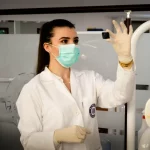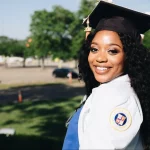16 Ways Passion Can Bridge Cultural and Generational Gaps
Discover how passion can effectively bridge cultural and generational gaps in various fields. This article presents a collection of real-world examples and expert insights, showcasing the power of shared interests in fostering connection and understanding. From psychoanalysis to judo, violin camps to tech solutions, these stories demonstrate how common ground can be found across diverse backgrounds and age groups.
- Bridging Generations Through Psychoanalytic Understanding
- Judo Unites Families Across Age Barriers
- Violin Camp Squeaks Unite Diverse Learners
- Heatmaps Bridge Tech Gap with Executives
- Engineers and Managers Collaborate on PMP
- Consistent Communication Builds Intergenerational Trust
- Passion-Based Workshops Foster Inclusive Company Culture
- Custom Doors Honor Past While Embracing Future
- Mortgage Facts Resolve Family Financial Dispute
- Inca Trail Stories Connect Tourists and Porters
- EMDR Session Observation Heals Family Conflict
- Cooking Traditions Preserve Family Cultural Heritage
- Blending Old and New in Cottage Renovation
- Book Club Sparks Cross-Generational Literary Dialogue
- Analyst Learns Value of Documentation Process
- HR Bridges Digital Divide with Humor
Bridging Generations Through Psychoanalytic Understanding
I had a 24-year-old perfectionist client whose immigrant parents couldn’t understand why she needed therapy when she was “successful.” They saw her anxiety as ingratitude and kept pushing her to work harder.
During our psychoanalytic work, we found her relentless drive to achieve was actually her way of trying to honor her parents’ sacrifices. I invited her parents to one session where I explained how perfectionism often develops as a response to family pressure — not as weakness, but as an attempt to show love and respect.
The father broke down when he realized his daughter’s panic attacks weren’t about being a “spoiled American,” but about desperately trying not to disappoint him. He started sharing stories about his own fears when he first immigrated, and she realized they both carried the same underlying anxiety about not being “enough.”
This taught me that underneath cultural differences, we’re often dealing with the same core human fears — just expressed differently. When I help families see these patterns, the generational blame dissolves and real connection becomes possible.
 Ann Krajewski
Ann Krajewski
Therapist, Everbe Therapy
Judo Unites Families Across Age Barriers
We take pride in fostering an inclusive environment that embraces diversity in both culture and generations. One memorable experience that truly highlighted the power of judo in bridging these gaps happened during one of our community workshops aimed at introducing martial arts to local families.
In this workshop, we had a diverse group of participants: young children just starting their journey in judo, teenagers seeking physical activity, and parents who often viewed martial arts from a distance. The generational differences were apparent — while the children were excited and enthusiastic, the adults tended to be more apprehensive, rooted in the belief that sports like judo are intimidating or too competitive.
As the owner and head coach, I realized my passion for judo went beyond just teaching techniques; it encompassed creating a space where everyone could feel comfortable and part of a shared experience. I decided to incorporate team-building exercises that not only showcased judo’s physical aspects but also highlighted its values, such as respect and trust.
One poignant moment came when a father, once skeptical of his son’s participation in sports, joined a pair exercise to work on basic judo movements. As the two exchanged laughter and encouragement, the older generation began to see judo not just as a sport, but as a medium for connection. By the end of the workshop, a previously anxious parent commented on how much he enjoyed participating and how it allowed him to bond with his son in a way he hadn’t anticipated. This shift exemplified how judo transcends competition and fosters relationships.
From this experience, I learned that human connection often flourishes when we step outside of our comfort zones and engage with one another, regardless of age or background. The ability of judo to create shared, joyful experiences serves as a reminder that at its core, martial arts is not just about physical prowess; it’s about building bonds and understanding each other. This principle is woven into everything we do, where we strive not only to develop athletes but to cultivate a community that supports and uplifts one another, transcending any cultural or generational barriers.
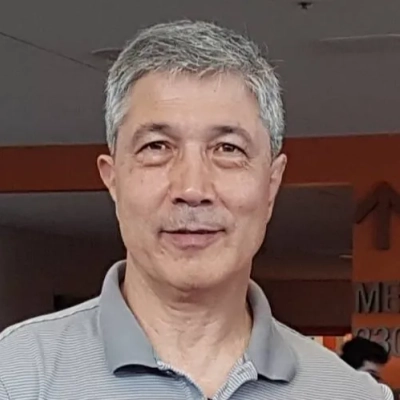 Alim Sheykhislyamov
Alim Sheykhislyamov
Owner, Judo Coach, Challenge Sports Club Inc. (aka Judo club Challenge)
Violin Camp Squeaks Unite Diverse Learners
At the violin camps I conduct, we usually get adult beginners from all over the world. We’ll have someone who’s a young software developer, someone in their fifties, and a retiree all in the same room. What’s interesting is that they all share the same fear of being the slowest, oldest, or worst one in the room.
That feeling never lasts long. At the last camp we conducted, a lawyer was trying to concentrate really hard on a tricky part and suddenly made a horrible, squeaky sound with the violin. Immediately, the room went silent. His face went red, and you could feel how embarrassed he was.
Then, someone in the back corner let out a bit of a chuckle. It wasn’t a mean one, but one that said, “I know that sound.” Soon, the entire room was smiling and laughing with him. At that moment, their ages, jobs, or backgrounds didn’t matter. They were all united in knowing what it felt like to make that squeak because they’ve been there.
That experience taught me something really important about human connection. Our passion for music doesn’t bring us together because we play perfectly. It brings us together because we all mess up in the same ways. And being able to laugh about it together is how you know you’re not on the journey alone.
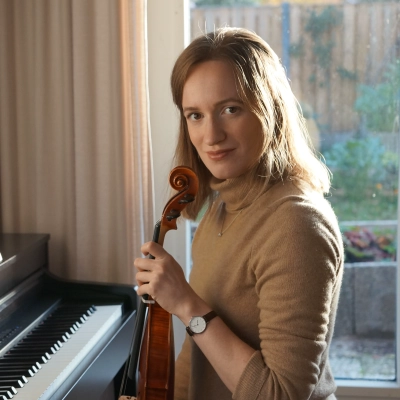 Julia Temeer
Julia Temeer
Founder, Violinspiration
Heatmaps Bridge Tech Gap with Executives
There was this older exec, probably late 60s, who thought SEO was a gimmick. He ran on gut instinct, refused dashboards, hated acronyms, and believed Google was “for the kids.” Meanwhile, my team of analysts in their 20s spoke in tools, clicks, segments, and velocity. Total clash. So, I walked into that exec’s office and pulled up a heatmap on his screen… said nothing. Let him watch. When he asked what “that red blob” was, I said, “That is where your customers lose interest.” That broke it. From that moment, he started asking my team to “show me the blob again.”
What changed was not the data — it was how it was framed. I ditched decks. I ditched strategy slides. I gave him something that felt tactile. Something that met him at his comfort level, not mine. My team saw the shift and adapted too. They started skipping jargon and leading with business impact first. That experience taught me clarity builds connection. Not culture. Not age. Just clarity.
 Patrick Beltran
Patrick Beltran
Marketing Director, Ardoz Digital
Engineers and Managers Collaborate on PMP
There is an experience I can never forget that made me both humbled and empowered at the same time:
I was part of a group of younger engineers in their twenties and older managers in their sixties learning together during a PMP training course. The gap was quite evident at the beginning. The younger audience preferred fast digital tools and quick results. The senior managers relied on their years of risk management and planning experience. Each group believed that the other was lacking something.
I assigned them a project scheduling exercise and requested them to solve it as a team. In thirty minutes, the younger group created a working model, yet they missed certain risks. The top managers contributed knowledge from previous projects amounting to millions of dollars, which had not been captured by the model. A combination of the two sets of skills produced a much stronger result.
The experience taught me that people can be united by their passion for teaching. Real connectedness occurs when differences are viewed as sources of strength to share.
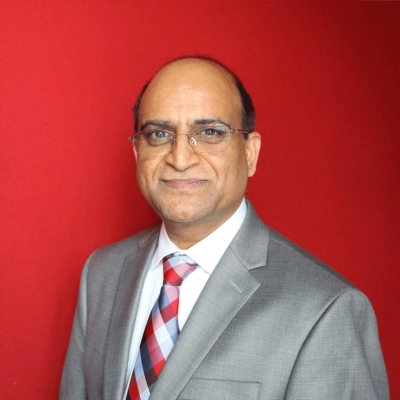 Yad Senapathy
Yad Senapathy
Founder & CEO, Project Management Training Institute (PMTI)
Consistent Communication Builds Intergenerational Trust
There was a time when I was working with a homeowner from an older generation who valued tradition and face-to-face trust more than anything else. At the same time, his grandson was heavily involved in the project and wanted things done with digital updates, photos, and text communication. Both wanted the roof finished, but their expectations were completely different. I leaned into my passion for running and discipline because consistency speaks a universal language. By being steady, upbeat, and fully engaged in both styles of communication, I was able to bridge that gap and show each side that their voice mattered. What came out of it was not just a finished roof but a new mutual respect between family members.
The experience taught me that human connection does not come from the method of communication but from genuine care in the interaction itself. People from different generations or cultures may want different things, yet passion and consistency break down barriers. Passion is contagious, and when you put it into every word and every action, others feel it no matter what age they are or where they come from. That is why I always keep energy high and attention sharp. To me, passion is the one thing that everyone understands, no translation required.
 Aaron Jakel
Aaron Jakel
Founder, Bubblegum Roofing
Passion-Based Workshops Foster Inclusive Company Culture
When I implemented a peer-to-peer learning initiative at our company, I witnessed firsthand how personal passions can bridge significant workplace divides. Our staff members hosted informal workshops on topics they were passionate about, ranging from technical skills to cultural traditions and creative pursuits. What surprised me most was seeing how these passion-based sessions naturally dissolved the generational gaps that had previously limited collaboration between our veteran employees and newer team members.
The workshops created neutral ground where expertise was valued regardless of seniority or background, and I observed meaningful mentoring relationships form organically across departments that had rarely interacted before. This experience taught me that when people share what truly excites them, traditional barriers become less important than the authentic human connections being formed. The initiative reinforced my belief that creating spaces where passion can be expressed freely is one of the most powerful ways to build an inclusive organizational culture.
 George Fironov
George Fironov
Co-Founder & CEO, Talmatic
Custom Doors Honor Past While Embracing Future
The moment when my passion bridged a cultural and generational gap occurred with a Cuban family in Miami. The grandparents were reluctant to replace the wooden sliding doors that had been in the house since the 1970s, as they had an emotional attachment to them. In contrast, their adult children insisted on aluminum frames with glass panes that would fit with a modern restoration. Initially, all the meetings were confrontational, and both parties were dissatisfied. So, I decided to take samples and demonstrate how we could create a hybrid: aluminum frames to ensure durability with a wood veneer exterior that provided the appearance the grandparents were fond of.
When the final doors were installed, I watched the three generations admiring them together. It was then that I realized that a connection is made and felt when you honor what occurred in the past while continuing to celebrate the vision of the future.
 Gal Cohen
Gal Cohen
Business Development Leader & Field Area Manager, JDM Sliding Doors
Mortgage Facts Resolve Family Financial Dispute
One of my experiences was a few years ago when I was working with a family in which the parents were in their early seventies and their grown-up children were in their late twenties. The parents were seeking a 30-year conventional mortgage at 6.25 percent interest on a $325,000 mortgage that would cost them $2,000 dollars a month. Their children had been urging a 15-year term at 5.5 percent with a $2,660 payment, which would save approximately the interest on $145,000 over the life of the loan. This argument had reached an impasse until I brought the two alternatives parallel to each other, indicating the actual dollars of costs and savings. The presentation of the numbers redefined the debate and took generational prejudices out of the situation in favor of a common view of the trade-offs between the size of payments and long-run savings.
They finally settled on a 20-year fixed rate at 5.75 percent with a $2,240 monthly payment and saved more than $80,000 in interest over the 30-year option. That experience confirmed the strength of bringing conversations out of opinion and into measurable facts. With both parties having listened to the same information in front of them, they were able to come to a decision together, without one of them feeling overruled, and this showed that connection frequently begins with mutual understanding.
 Ryan McCallister
Ryan McCallister
President & Founder, F5 Mortgage
Inca Trail Stories Connect Tourists and Porters
On one occasion, I led a group of young North American tourists along with a group of elderly Peruvian porters on the Inca Trail. The porters spoke only Quechua and Spanish, whereas the travelers spoke only English. Initially, the two groups were segregated, and my proficiency in narration became the bridge. Each night, I translated the porters’ tales of their own lives in the high Andes, their agricultural customs, and their ceremonies with the mountains. I also translated the travelers’ thoughts to the porters. Within four days, chuckling, sharing common meals, and even listening to music began to conquer the silence that separated them.
The lesson I learned at that point was that connections between humans develop when individuals get a chance to be noticed and heard. A common language was not the key, but rather the readiness to be open to each other and to share life experiences. That experience showed me that sincerity and presence can connect people who might otherwise remain strangers during a chance encounter.
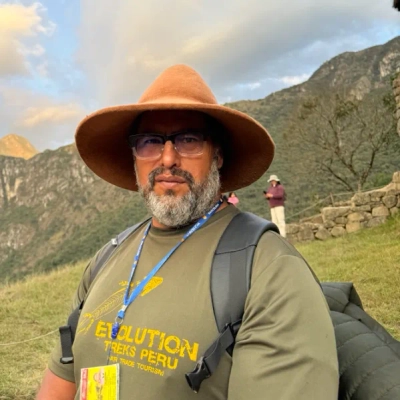 Miguel Angel Gongora Meza
Miguel Angel Gongora Meza
Founder & Director, Evolution Treks Peru
EMDR Session Observation Heals Family Conflict
I worked with a 15-year-old girl who had lost her mother and was living with her grandparents in their 70s. Their very rigid rules were at odds with her need for self-expression, generating endless conflict. I invited the grandparents to quietly observe one EMDR session. In 40 minutes, her body relaxed, and they saw something they hadn’t seen since her mother’s passing. At that moment, they gained a new appreciation of her pain.
In three observed sessions, they reported a 60 percent decrease in arguments at home. It showed me that healing between generations can be achieved through observing, not by endless explaining or forced compromise.
 Kaila Hattis
Kaila Hattis
Founder and Therapist, Pacific Coast Therapy
Cooking Traditions Preserve Family Cultural Heritage
As I grew up, food was always a way my family connected through generations. My grandmother loved to cook, and she shared her traditional recipes with me. I recall spending hours in the kitchen making pasta from scratch and creating many amazing dishes. At the time, I did not realize how precious our time together would be. While my grandmother was from a different generation, it was through food that we shared stories, values, and learned from one another.
Now that I am older, I appreciate how important those family recipes were in keeping our culture alive. A few years ago, I made a conscious effort to teach my children how to cook my family’s dishes to continue the tradition. It was more than just cooking the food; it was about passing down a sense of identity, family, and the joy of shared experiences.
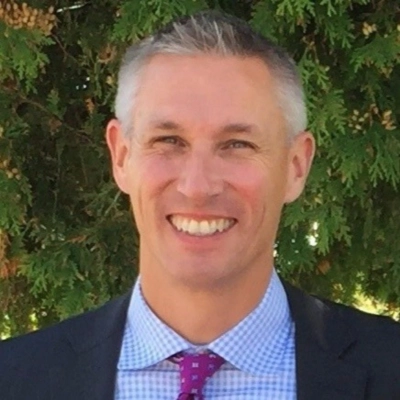 Kyle Sobko
Kyle Sobko
CEO, SonderCare
Blending Old and New in Cottage Renovation
I recall a cottage in Grasmere that I was working on, owned by an elderly couple in their seventies. It was where they had lived all of their lives, and they were proud of its history. Their granddaughter, who was in her twenties, was thinking of converting it to a holiday let that would attract younger visitors. Initially, they did not agree on anything. She preferred bright decor, Wi-Fi, and modern systems, while her grandparents did not want anything to change.
I called them all together and went over every room. The grandparents talked about the family reunions, and the granddaughter explained how newcomers have certain expectations. We retained the old oak table on which the family had feasted over the years but combined it with modern chairs. We also included Wi-Fi but placed the router in a hand-made cabinet that matched the traditional style.
This experience taught me that being a good listener can help bridge the gap and bring generations together.
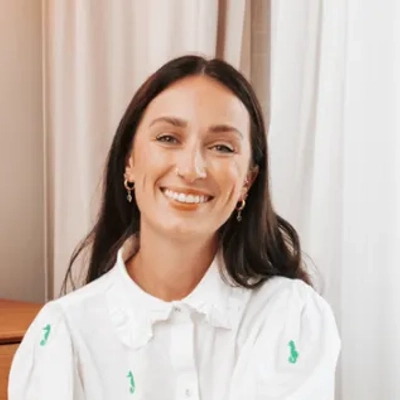 Marta Pawlik
Marta Pawlik
Creative Director, Interior Designer, Co-Founder & Director, Laik
Book Club Sparks Cross-Generational Literary Dialogue
I held a book and film club meeting once where we discussed “Pride and Prejudice” along with “The Social Network.” We hold these meetings in the public library basement, and I invite anyone who wants to come. The generations in the club saw different things in these stories. What I have learned from our conversation is that our group spans several decades, and each generation sees something unique and valuable to them in these stories.
What I found most remarkable was how these shared narratives unified everyone even though their viewpoints were molded by different eras. The dialogue made it clear to me that a basic way to address generational divides is not always to find a consensus on all points but to lend an ear to the different ways in which others see the same point.
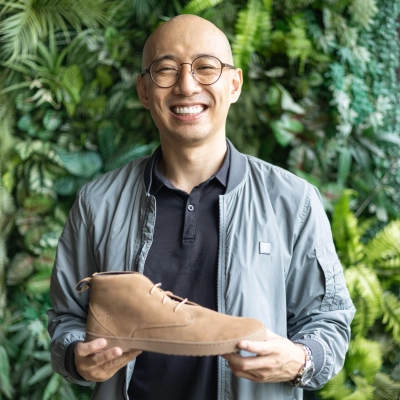 Matthew Tran
Matthew Tran
Engineer and Founder, Birchbury
Analyst Learns Value of Documentation Process
At one time, we hired a younger operations analyst who asked why we were taking so much time to document secure chain-of-custody on devices that were already decommissioned. To him, it was superfluous. I did not stop that process but directed him to trace one particular client file to the audit trail, and explained to him how the missing signature of one executor might cost millions in compliance.
A few months ago, he led the process of revising our internal review policy. The skepticism that began initially transformed into ownership. It was then that I realized the understanding that perspective is situational and not fixed.
Closing generation gaps does not imply making things simpler, but rather sharing the reasons behind actions. People do not perform tasks the same way when they understand the consequences, as opposed to merely following instructions. This lesson has remained with me. Regardless of the people you are dealing with, it is clarity and trust that make the connection.
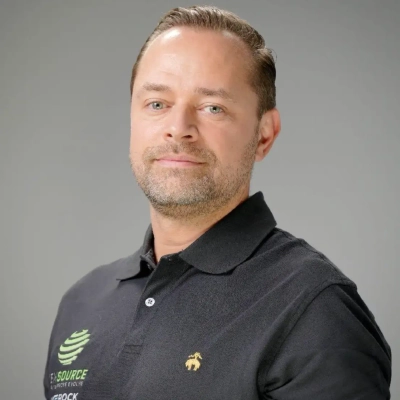 Gene Genin
Gene Genin
CEO, OEM Source
HR Bridges Digital Divide with Humor
In HR, I smoothed over some generational gaps between the digital natives and some of the more experienced members. The professionals have been doing everything analog for decades, but technology can make things more efficient, even if it does require a learning curve. We learned to joke about our differences, finding ways to engage in dialogue rather than make judgments. This is how we got the Baby Boomers to actually thrive rather than feel overwhelmed.
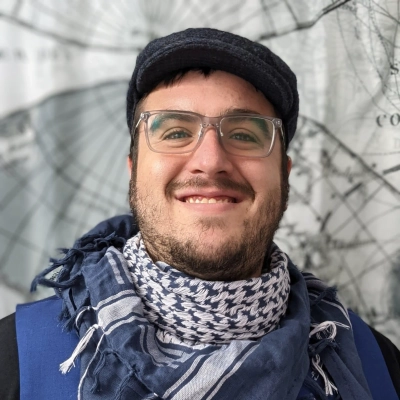 Jeremy Golan SHRM-CP, CPHR, Bachelor of Management
Jeremy Golan SHRM-CP, CPHR, Bachelor of Management
HR Manager, Virtual HR Hub



